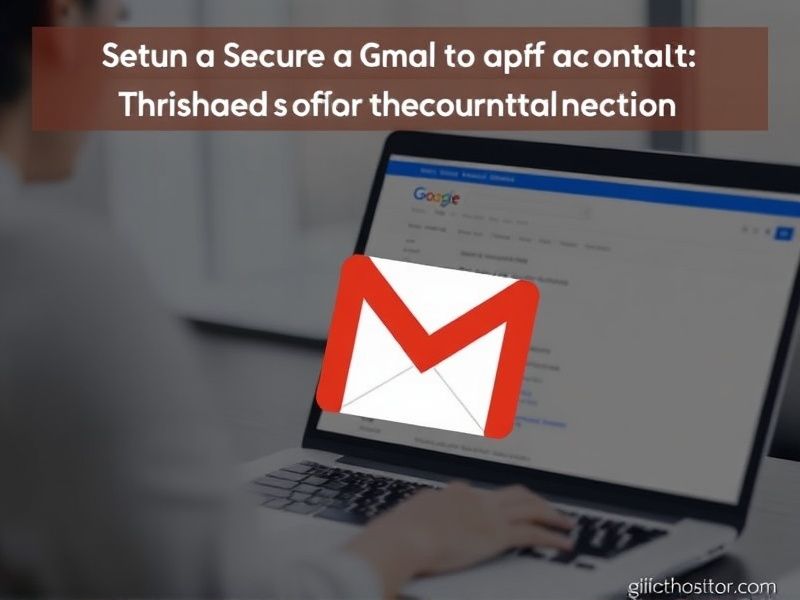How to Set Up and Manage a Secure Company Gmail Account That Actually Works
Let’s Get Your Business Email Up and Running
You know that moment when you realize your personal Gmail just won’t cut it for business anymore? Maybe your team’s sharing passwords like candy, or worse – someone just replied to a client from your cousin’s wedding email account. Time to upgrade to a proper company Gmail account. The good news? It’s easier than you think, even if you’re not tech-savvy.
The Nuts and Bolts of Setup
First things first – you’ll need to claim your business identity online. That means connecting your company domain to Google Workspace. Imagine it like getting a custom license plate for your digital presence. The verification process? Surprisingly straightforward. You’ll either add a TXT record to your domain’s DNS settings (sounds scary, but takes about 5 minutes) or upload an HTML file. Pro tip: Grab your web developer’s coffee first if you’re not comfortable with domain settings.
Keeping the Bad Guys Out
Here’s where most businesses drop the ball. Setting up two-factor authentication isn’t just a “nice-to-have” – it’s your digital bouncer. We’ve all heard horror stories about compromised accounts. Did you know that turning on 2FA blocks about 99% of automated attacks? And don’t get me started on spam filters. Google’s AI-powered filters catch roughly 90% of junk mail before it hits your inbox. But here’s the kicker – you need to train it properly by marking those sneaky phishing attempts that slip through.
| Security Feature | Why It Matters | Setup Time |
|---|---|---|
| 2-Step Verification | Blocks unauthorized access | 15 minutes |
| Spam Filters | Reduces phishing risks | Automatic |
| Session Controls | Prevents lingering logins | 5 minutes |
Making Google Work for Your Team
Remember that time your team had 12 different versions of a proposal floating around? Enter Google Drive and Docs. The real magic happens when you combine company Gmail accounts with Workspace apps. Need to schedule a meeting? Just hover over a contact’s name in Gmail to see their availability. Sharing files becomes as easy as typing “@” in a document. And here’s a game-changer – set up shared labels in Gmail to keep customer inquiries organized across your support team.
When Things Go Sideways
Let’s face it – even with the best setup, issues pop up. Maybe Susan from accounting clicked a suspicious link. First rule: Don’t panic. Google’s account recovery process is pretty robust if you’ve prepared. Always have backup contact methods set up and consider designating 2-3 account recovery admins. For permissions, think of it like a restaurant menu – not everyone needs access to the full kitchen. Regular checkups (quarterly works for most teams) help prevent permission creep.
Real-World Scenarios
Take “Bob’s Bike Shop” – a 15-person operation that switched last year. They saved about 6 hours weekly just by using shared calendars instead of endless email threads. Or “TechStart Inc.” that avoided a major data breach thanks to granular permission controls when an ex-employee tried accessing sensitive files. The lesson? These features aren’t just corporate fluff – they deliver actual time and security savings.
Keeping Communication Tight
Here’s where company Gmail accounts really shine compared to basic email services. Use labels like “#urgent” or “client-feedback” to create visual priorities. Combine this with Google Chat spaces for quick team huddles. Found a great article relevant to your marketing team? Star it and share directly to your Workspace group. And if you’re still CC’ing the whole company on every email, let’s have an intervention – shared mailboxes are your new best friend.
Pricing That Won’t Shock You
Let’s talk turkey. Google Workspace starts around $6/user/month – cheaper than most office coffee budgets. Compared to competitors like Microsoft 365, you’re getting better integration between email and collaboration tools. For small teams, the Business Starter plan covers essentials. Growing fast? The mid-tier plan adds video recording and advanced security. Enterprise users get the full monty with S/MIME encryption and data regions control.
Final Pro Tips
1. Set up an email retention policy from day one – you don’t want 5 years of receipts clogging your storage
2. Use Google Vault for important communications (it’s like a time machine for emails)
3. Create an offboarding checklist for departing employees
4. Test your spam filters monthly with fake phishing emails
5. Celebrate when you finally delete that embarrassing personal email alias!
At the end of the day, a company Gmail account isn’t just about professionalism – it’s about creating systems that help your team work smarter. Sure, there’s a learning curve, but most businesses find the switch pays off within the first quarter. Still on the fence? Try the 14-day trial. Worst case? You’ll walk away with better email habits. Best case? You’ll wonder how you ever managed without it.





Reviews
There are no reviews yet.